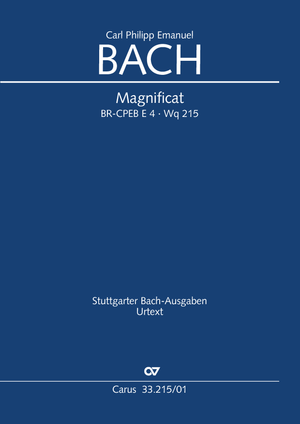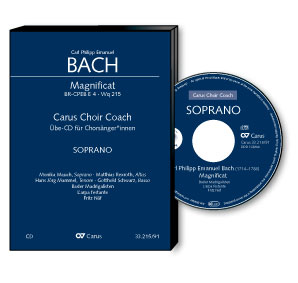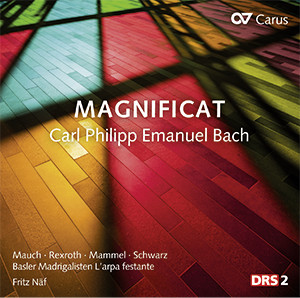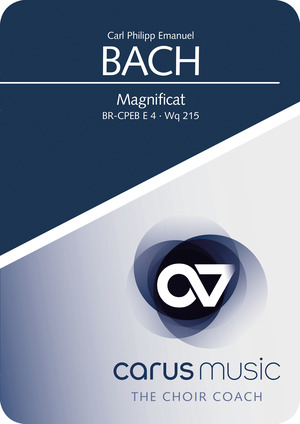
C. P. E. Bach’s nine-movement Magnificat (1749), the first great vocal work from his Berlin years, is among the most magnificent sounding, in which the solo vocal parts are also among the most ambitious settings of the “Hymn to the Virgin Mary” (Luke 1). The work fulfills all the criteria required for a larger sacred composition: grandeur, dignity, polyphonic and concertante choral movements, sensitive (“empfindsam”) and expressive arias, a long concluding double fugue. This richly scored Magnificat (with 3 trumpets and timp. ad. lib.), which is almost one hour in duration, would be well suited, for example, as the central work on every Christmas or pre-Christmas concert programme.
Purchase
Additional product information
Contents
-
Composer
Carl Philipp Emanuel Bach
| 1714-1788Carl Philipp Emanuel Bach (1714–1788) was an extremely prolific composer who enjoyed a high reputation during his lifetime with the result that his music became known far and wide. The early works were influenced by the Berlin School. In his later works, however, this composer developed a thoroughly individual style, independent of contemporary fashions, which is to be found especially in the sacred vocal works written during his years as Director of Music in Hamburg (1768–1788). Personal details
-
Editor
Günter Graulich
| 1926The publisher, church musician and teacher Günter Graulich is one of the major personalities in German publishing of the post-war period. With his wife Waltraud he founded Carus-Verlag Stuttgart in 1972, which he built up from a 2-person family firm to a medium-sized business with around 60 employees. A trained church musician and Kantor for many years at the Matthäuskirche Stuttgart, he also directed the Motettenchor Stuttgart for 50 years. With his choir he made LP and CD recordings, and undertook numerous concert tours to other European countries and America. Personal details
-
Preface writer
Uwe Wolf
| 1961Uwe Wolf studied musicology, history, and historical ancillary science at Tübingen and Göttingen. After receiving his doctorate in 1991 he was a research assistant at the Johann-Sebastian-Bach-Institut in Göttingen. From 2004 he worked at the Bach-Archiv Leipzig. There he directed a both research departments, was substantially responsible for the redisigning of the Bach Museum, and he developed the digital Online-Projekt Bach. Since October 2011 he has been the Chief Editor at Carus-Verlag, Stuttgart. He has taught at various universities and also belongs to the editorial boards of several complete editions. Personal details
Frequent questions about this work
Which version of the piece does the Carus edition contain?
The edition allows both the Hamburg version with trumpets and timpani as well as the Leipzig version without these instruments to be performed. The only fundamentally different movement – the Et misericordias eius – is contained in both versions.
Can the earlier Et misericordias from the main part of the edition also be combined with the version with trumpets?
Of course! C.P.E. Bach replaced the Et misericordias, because he had used it in a prominent place in the Passion cantata often performed in Hamburg; the replacement of the movement was therefore a workaround solution. But the original variant is a high point of the composition – and in the version with trumpets too.
 There are no questions and answers available so far or you were unable to find an answer to your specific question about this work? Then click here and send your specific questions to our Customer Services!
There are no questions and answers available so far or you were unable to find an answer to your specific question about this work? Then click here and send your specific questions to our Customer Services!









